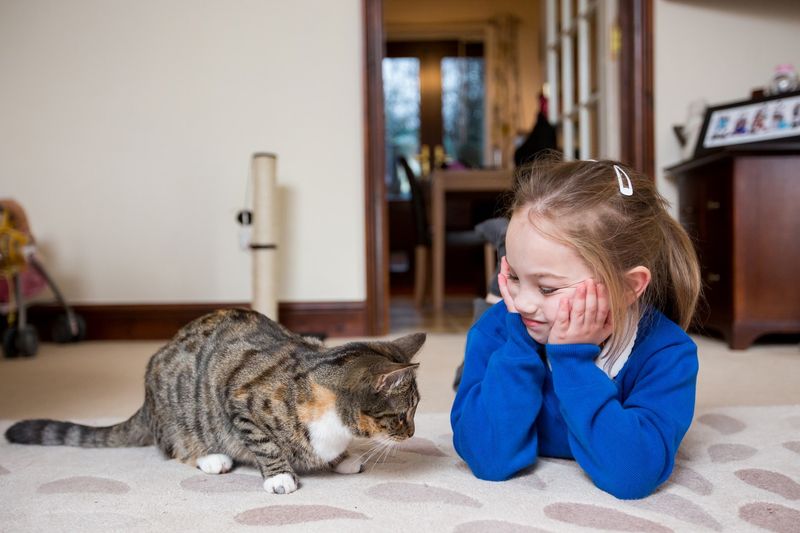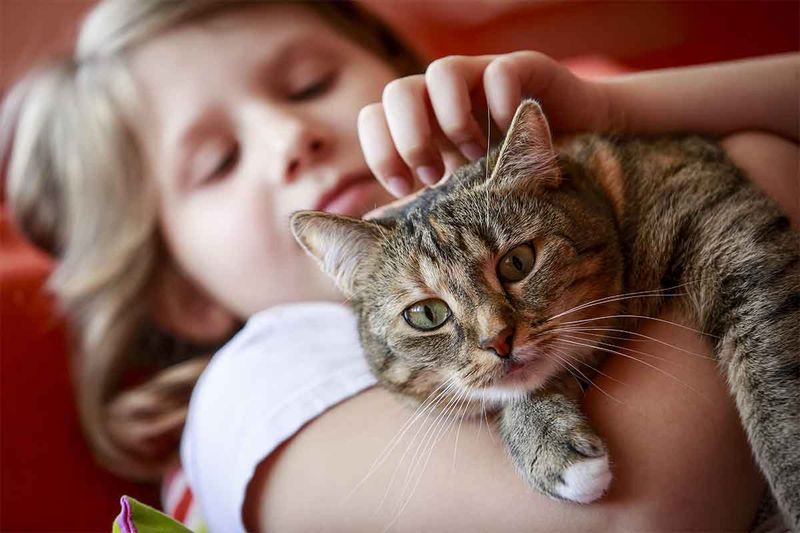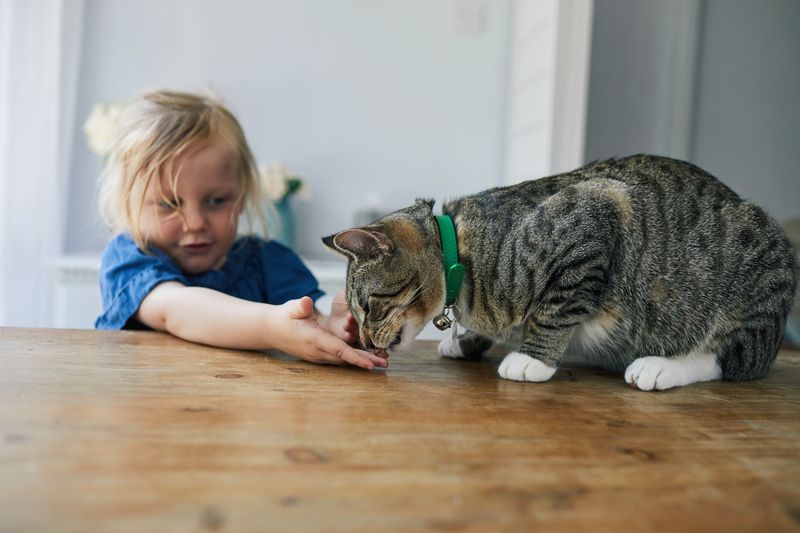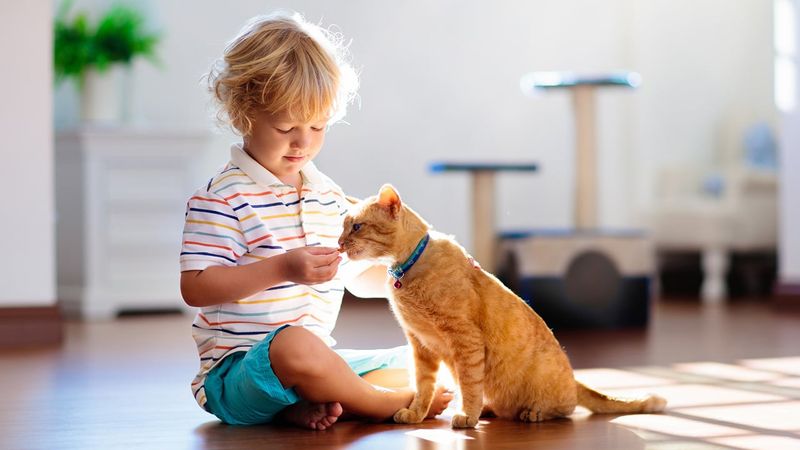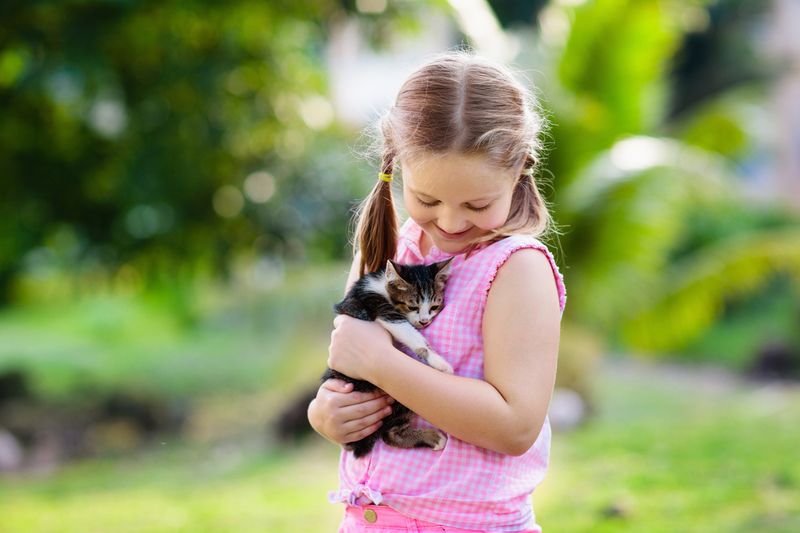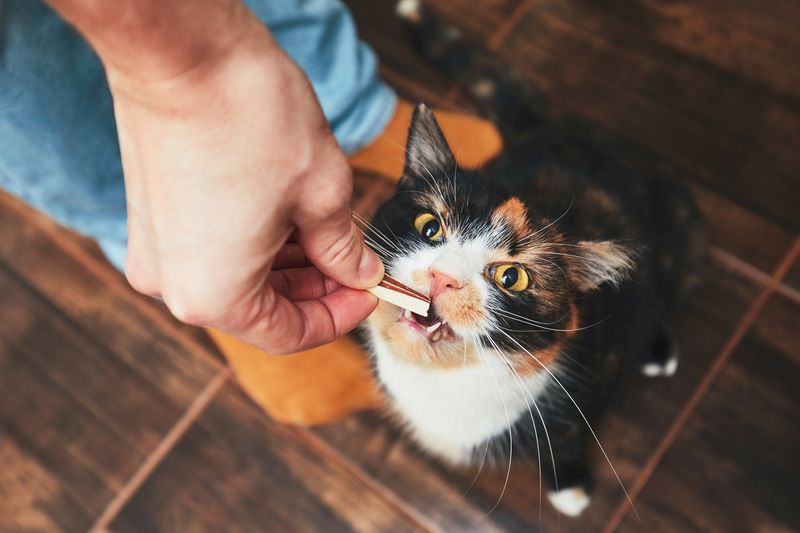📖 Table of Content:
Bringing a cat into a family with children can be a wonderful experience, but it requires careful planning and patience to ensure a harmonious relationship. Cats are sensitive creatures, and kids are naturally curious, so introducing the two the right way is key to building trust and mutual respect.
This process can foster a loving bond between your feline friend and your little ones, teaching children empathy and responsibility while giving your cat a sense of security.
To help facilitate that, we’ll share six practical tips to help introduce your cat to your kids in a way that is smooth and stress-free for both your cat and your kids.
Whether you’re adopting a new pet or helping your children bond with an existing family cat, these strategies will set the foundation for a happy and safe connection.
1. Start with a Calm Introduction
When introducing a cat to a young child, it’s essential to maintain a calm environment. Begin by sitting your child down in a quiet room with minimal distractions. Encourage them to stay still and allow the cat to approach at its own pace.
This method helps build trust, as the cat doesn’t feel threatened or overwhelmed. It’s crucial to remind your child to use a soft voice and gentle movements to avoid startling the cat. By creating a serene atmosphere, you facilitate a positive interaction. This approach not only helps the cat feel secure but also teaches your child patience and understanding.
Consider using treats or toys to engage both parties, fostering a sense of curiosity and excitement that encourages bonding.
2. Teach Respectful Touching
Teaching children how to touch a cat respectfully is key to a harmonious relationship. Show them how to approach the cat’s body with slow, gentle movements.
Explain that cats have sensitive areas, such as their tails and ears, and demonstrate how to avoid these spots. Make it a fun learning experience by using plush toys to practice. Encouraging positive interaction through respectful touching helps the child understand the cat’s boundaries. This respect fosters trust and affection between them.
Remember to praise your child for gentle handling, reinforcing good behavior. Over time, this practice builds a solid foundation of mutual respect, ensuring both child and cat feel comfortable in each other’s presence.
3. Create Safe Spaces
Cats, like humans, need their own space to retreat to when they feel overwhelmed. Designate specific areas in your home where the cat can relax undisturbed, equipped with a comfy bed and favorite toys.
Teach your child the importance of these safe spaces and why the cat might need alone time. This understanding encourages empathy and respect for the animal’s needs. By providing a haven, you assure the cat that it has a secure place to escape to, reducing stress. This practice also educates your child about personal boundaries and the importance of respecting them.
Over time, this mutual understanding enhances the bond between your child and the cat, as both gain confidence in interacting with one another.
4. Supervise Initial Interactions
Supervision is crucial during a child’s first interactions with a cat. Always be present to guide and monitor their behavior, ensuring both are safe.
Explain to your child the reasons for supervision, emphasizing that it’s for the safety of both parties. This approach not only prevents accidents but also provides teaching moments for proper interaction.
Being present allows you to intervene if the cat shows signs of distress or if the child becomes too enthusiastic. Encourage your child to observe the cat’s body language, teaching them when to give space. With supervised interaction, you lay the groundwork for independent play in the future, knowing that your child has learned how to engage with the cat safely.
5. Introduce Playtime Activities
Playtime is an excellent way for children to bond with cats. Introduce interactive toys such as feather wands or laser pointers to facilitate fun and safe activities. These toys allow children to engage with cats without physical contact, reducing the risk of accidental scratches. Explain the rules of play, emphasizing that it’s important to let the cat win sometimes.
Structured play sessions help both the child and the cat develop a routine they look forward to. This shared enjoyment strengthens their bond and provides the cat with much-needed exercise.
Ensure that playtime remains a positive experience by keeping sessions short and rewarding. Over time, these activities become a cherished part of their daily interaction, promoting a healthy relationship.
6. Educate About Cat Behavior
Understanding cat behavior is crucial for children. Equip them with knowledge about feline body language and sounds, using age-appropriate books or videos. Discuss common behaviors, such as purring or tail swishing, and what they mean. This education empowers children to interpret their cat’s needs and emotions accurately.
Encourage questions and foster curiosity, making learning about cats an engaging experience. This knowledge enables your child to respond appropriately to the cat’s signals, enhancing their interactions.
As children become more informed, they develop empathy and respect for their feline companions, creating a nurturing environment. This understanding leads to a harmonious relationship where both child and cat thrive.
7. Allow Observation from a Distance
Introducing a new family pet is an exciting moment for children. Begin by letting your kids observe the cat from afar. This lets the children understand the cat’s behaviors and moods without intruding. Watching a cat play or nap can be quite mesmerizing for young ones.
Allowing your children to see the cat in its natural environment helps them appreciate its unique personality.
As they watch, they will learn when the cat is most comfortable and when it prefers solitude. This passive observation fosters respect and understanding between your children and their feline friend.
8. Use Positive Reinforcement
Cats respond well to positive reinforcement, making it a great strategy to encourage interaction. Guide your children to offer the cat treats as a way to build trust and affection. This exchange not only delights the cat but also excites the kids as they see the cat’s positive reaction.
Using treats helps in forming a bond where the cat associates the presence of your children with pleasant experiences. It’s a joyful and educational process for both parties.
Remember, the key is to be patient and let the cat come to them, reinforcing good behavior with gentle praise.
9. Gradually Increase Interaction Time
Once the initial curiosity is satisfied, it’s time to gradually increase the interaction time. Start with short, supervised play sessions using toys that keep a safe distance, like a wand with feathers. This type of play encourages mutual enjoyment and builds confidence.
As the cat becomes more comfortable, you can allow longer periods of interaction. Encourage your children to speak softly and move gently around the cat.
This gradual increase in playtime is crucial in developing a close-knit relationship where the cat feels secure and the children feel joyful.

